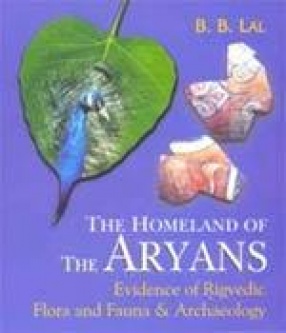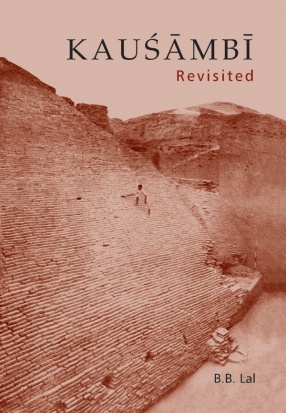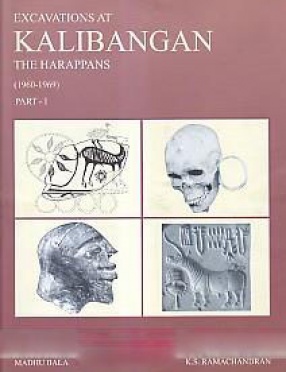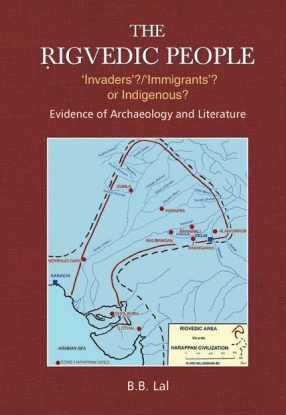For well over seven decades two theories have been blinding our vision of India’s past, viz. that: (i) there was an ‘Aryan Invasion’ of India; and (ii) the invaders destroyed the Harappan Civilization which became extinct. Although in his book, The Sarasvati Flows On, the present author completely demolished these theories, there are still a few scholars who cling to them. Resurrectinig the ‘Aryan Invasion/Migration’ theory, a stalwart writes: ‘One thing seems certain; the speakers of Vedic Sanskrit… came from elsewhere. This conclusion comes from… Indo-European words for trees which are species such as birch, Scotch pine, linden, alder and oak. These are plants from a temperate environment and the fact that their names are shared among the early languages of the family suggests a homeland in this environment. Let it be squarely stated that the earliest book of the Aryans, viz. the Rigveda, does not mention any of the species of cold-climate trees enumerated above. On the other hand, all the trees mentioned in the Rigveda, such as the Asvattha (Ficus religiosa L.), Khadira (Acacia catechu Wild.), Nyagrodha (Ficus benghalensis L.), do not belong to a cold climate but to a tropical one. Likewise, the Rigvedic fauna, comprising such species as the lion, elephant, peacock, also belongs to a tropical climate. Further, During the Rigvedic period the Sarasvati was a mighty river, but it dried up by the time of the Panchavimsa Brahmana. The evidence of archaeology, hydrology and radiocarbon dates shows that the Sarasvati dried up around 2000 BC. All this proves that the Rigvada antedated that magic figure. Again, the Rigvedic geography covers the area from the Ganga-Yamuna on the east to the west of the Indus. Likewise, the archaeological evidence shows that prior to 2000 BC it was the Harappan Civilization that flourished in this very region. Thus, the textual and archaeological data combine to establish a perfect spatial-cum-chronological oneness between the Rigvedic and Harappan cultures. And since, as demonstrated in this book, the Harappans were ‘the sons of the soil’, it squarely follows that Rigvedic people were indigenous.
The Homeland of the Aryans
by B B Lal
$62.10
$69.00
In stock
Free & Quick Delivery Worldwide
All orders amounting to US$ 50 or more qualify for Free Delivery Worldwide. For orders less than US$ 50, we offer Standard Delivery at $14 per book.
ABOUT THE AUTHOR B B Lal
An archaeologist of international repute, Professor B.B. Lal was the Director General of the Archaeological Survey of India. His excavation at Kalibangan in Rajasthan has brought to light a prosperous city of the Harappan Civilization. The excavations at Hastinapura, Indraprastha, etc. have established that there was a kernel of truth in the Mahabharata, though the epic is full of interpolations. The excavations at Ayodhya, Sringaverapura, etc. have shown that the Ramayana too has a basis in history. In 1961, he conducted excavations in Egypt, which threw valuable light on Egyptian prehistory. He has published over 150 seminal research papers, variously in India, USA, UK, France, Italy, Egypt, Japan, etc. Amongst his recent books are: The Earliest Civilization of South Asia (1997); India 1947-97: New Light on the Indus Civilization (1998); The Sarasvati flows On: The Continuity of Indian Culture (2002); The Homeland of the Aryans: Evidence of Rigvedic Flora and Fauna and Archaeology (2005); Rama: His Historicity, Mandir and Setu (2008); How Deep are the Roots of Indian Civilization? Archaeology Answers (2009). In 1982, Mithila Visvavidyalaya conferred on Professor Lal the title of Mahamahopadhyaya. In 1994, he was awarded D. Litt. (Honoris causa) by Institute of Archaeology, St. Petersburg, Russia. The same year he was elected President of World Archaeological Congress. In 2000, the President of India honored him with Padma Bhusana.
reviews
0 in total
Review by Anonymous
Be the first to review “The Homeland of the Aryans” Cancel reply
You must be logged in to post a review.
Bibliographic information
Title
The Homeland of the Aryans
Author
Edition
1st ed.
Publisher
ISBN
8173052832
Length
xx+126p., Figures; Tables; Plates; Maps; Appendices; Bibliography; Index; 23cm.
Subjects
more by B B Lal see more
The Rigvedic People ‘Invaders’?/’Immigrants’? or Indigenous?: Evidence of Archaeology and Literature
For several decades it has ...
$90.00
$100.00
similar bookssee more
Tribal Art and Craft
$22.50
$25.00
Indian Architectural Theory: Contemporary Uses of Vastu Vidya
In this ground-breaking ...
Out of stock






There are no reviews yet.